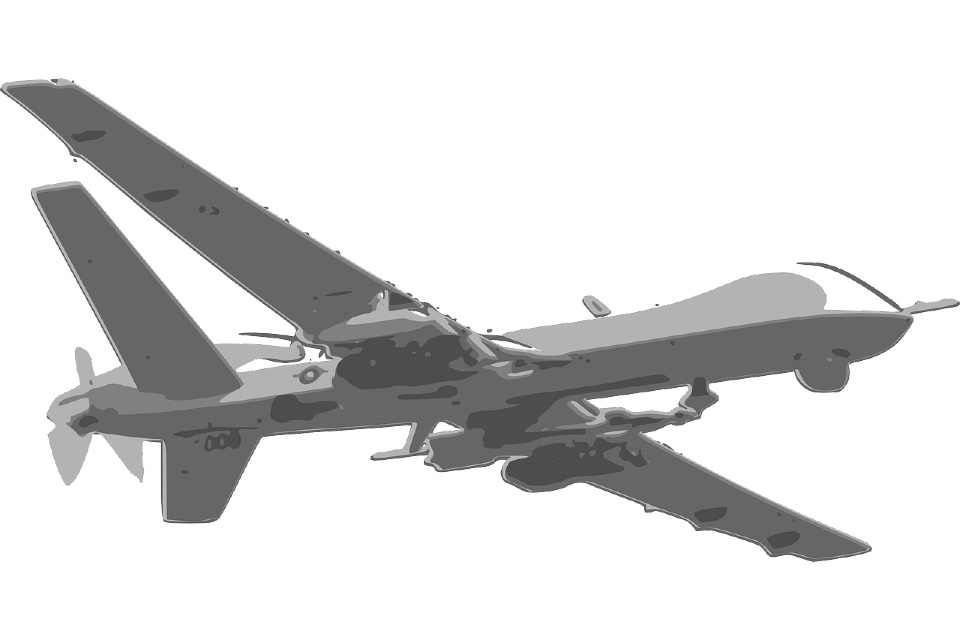The military drone market is projected to grow from $12 billion in 2022 to $17 billion by 2027, representing a CAGR of 7.3% over the duration of the forecast period.
Research analysts MarketsandMarkets attribute the growth to surging investment in development and procurement of modern military solution to enhance defence forces capabilities.
Moreover, the increasing incidences of piracy and island grabbing in Central Asia, South America, East Africa, the Indian subcontinent, Southeast Asia, and West Africa have led to increased maritime patrolling and anti-piracy operations in these regions.
This, in turn, has led to the increased use of UAVs to carry out maritime patrolling to identify hot spots. UAVs can recognize and observe suspicious ships and safeguard routes that are of commercial importance by providing vital real-time information to concerned agencies in an effective manner.
Based on propulsion, the military drone market has been classified into engine, piston engine, and battery. The battery segment includes military drones which are operated on lithium-ion batteries, fuel cells, and hybrid cells. The battery segment is anticipated to record the highest growth rate during the forecast period, with many short-range and medium-range drones adopting batteries besides the small drones.
Battery or electrically-powered military drones use batteries to store energy and power electric motors. These drones are easy to operate and emit lesser noise as compared to turbo engine drones. However, lithium-ion batteries used in military drones need to be recharged once the charge is depleted; the process of recharging consumes a substantial amount of time. In contrast, fuel-powered military drones can be refueled at a quick pace. Hydrogen-powered military drones offer the benefit of electric propulsion, thereby enabling military drones to fly for long durations.
Based on speed, military drone market has been segmented into subsonic and supersonic. The subsonic segment has been further divided into <100 Km/hr, 100–300 Km/hr, and >300 Km/hr. The subsonic segment contributed to the majority share of the market as currently, most military drones operate at conventional subsonic speeds. Drones with a speed of less than 100 km/hr generally include small ISR drones and some close-range drones.
The growing demand for small drone platforms is set to boost the growth of the <100 km/hr segment. Moreover, drones with a subsonic speed ranging from 100–300 km/hr are generally medium endurance, low to medium range drones such as close range, short range, medium range, and tactical drones.
The increasing use of tactical drones for ISR applications is set to boost the growth of the 100–300 km/hr segment. Furthermore, drones with a more than 300 km/hr subsonic speed are high endurance, medium to long range, high-speed drones. The growing demand for armed drones such as lethal drones and target drones is set to boost the growth of the >300 km/hr segment.
The report says China, Malaysia, South Korea, and India heavily invest in military drone development projects. India imports a significant amount of military solutions from North America and Europe. Besides, China is a technologically advanced country with one of the biggest technology manufacturing industries. The country is known worldwide for its speed and efficiency, which are the major focal points for drone manufacturers.
Some well-known military drone, payload, and drone component manufacturing companies in China are Autel Robotics, China Academy of Aerospace Aerodynamics, Chengdu Rainpoo Technology Co., Ltd. Sichuan, Aviation Industry Corporation of China (AVIC), and China Aerospace Science and Technology Corporation.
There are different research teams in China working on launching military drones. New technologies create new products and new processes. Apart from improving quality, technological advancements can also help reduce costs. Advancements in technology and increasing adoption of technologies to improve defense operations will result in the growth of the military drone market.






